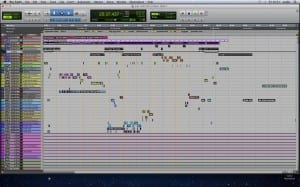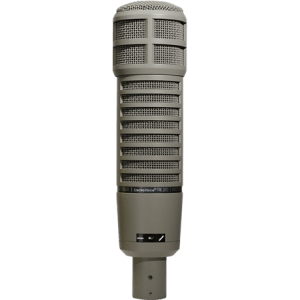Once I received the sound – lock clip with all the interviews and vox pop sequences in place I started working on the remaining dialogue edits (placing the already edited ones from before on the new timeline). Using a technique taught to all Audio Production Students in Levels 1 through 3 called Checkerboarding (taught to us by Chris Hainstock, Grant Bridgeman and also David McSherry in several workshops) I had a better view of the audio clips and this also allowed me to create smoother fades during transitions.

I then contacted Daniel Berry to arrange a date and time to record the voice overs. As he is an Audio Student as well I asked him which microphones he normally works with and which ones fit his voice – We both agreed on the Electro Voice RE 20 Microphone for the narration. This is the microphone he uses when he is presenting on live radio and it also fitted his voice nicely, but most importantly it provided us with a great sound which came very close to the director’s requirements. I decided to use a Shotgun microphone (Sennheiser boom mic) to record the questions after the narrations just to give them more of a “recorded on location” feel/sound.
Ken Blair gave a guest lecture on how to conduct ourselves professionally and I took a few tips into consideration from that talk – During the recording of the voice overs I made sure that Daniel always knew what was going on, I talked to him frequently and brought him water, tea and provided everything he asked for to the best extent I could.
After the VO recordings I continued with the rest of the post production process.
